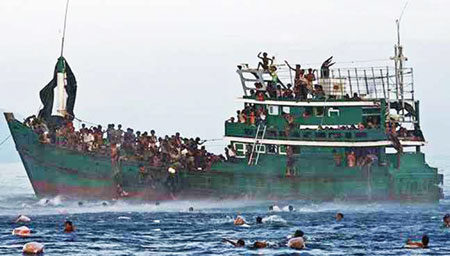Legal Protections
When people are smuggled they are regarded as illegal migrants. If they have been trafficked they are considered victims of trafficking. That triggers a different body of rights under domestic and international laws.
This explains why some of the governments in the region are very hesitant to regard any of these people as victims of trafficking, because it would require a certain type of other response from them – a more rights-respecting response, frankly. Myanmar considers those who departed Rakhine state to have been smuggled, not trafficked, according to recent government statements.
One of the region’s wealthiest countries, Australia, with a long tradition of accepting immigrants, has taken a hard line under the government of Prime Minister Tony Abbott of refusing to accept those who board boats. Most of the other countries have made clear they are not keen to take in the Rohingya or the Bangladeshi migrants, fearing that accepting a few will invite many more.
Nevertheless, Malaysia and Indonesia agreed last week to provide the migrants with one-year shelter. Indonesia says Rohingya can stay for a year while Bangladeshis will be repatriated. It is unclear what happens after a year, and both countries have called on the international community to help with resettlement options. Thailand has offered “humanitarian help” but not shelter. More than 100,000 refugees, mostly from Myanmar’s other ethnic groups, have been living in border camps for decades, and Thailand says it can’t afford any more.
Conclusion
Unfortunately, most of the governments of Developing countries have a strong tendency to write off all its poor citizens who do not follow the legal route to go abroad; and Bangladesh is no different. Whether such people face any hardship and they may perish – the state has no concern with the way they live or die. The plight of Bangladeshi migrant workers in conflict with the law abroad may have its roots in the government’s certain policies but this offers no solution to the humanitarian aspect of the matter.
The government needs to realize that the illegal migrants do not necessarily lose all their basic rights, especially their rights to a fair trial and to appropriate remedy and redress. It should not be too much to expect our authorities to extend legitimate relief to Bangladeshi illegal migrants in distress abroad, and to see that they do not suffer more than what they deserve. Most importantly, the culprits behind the neo-slave trade of this twenty-first century must be hunted down for exemplary punishments.




